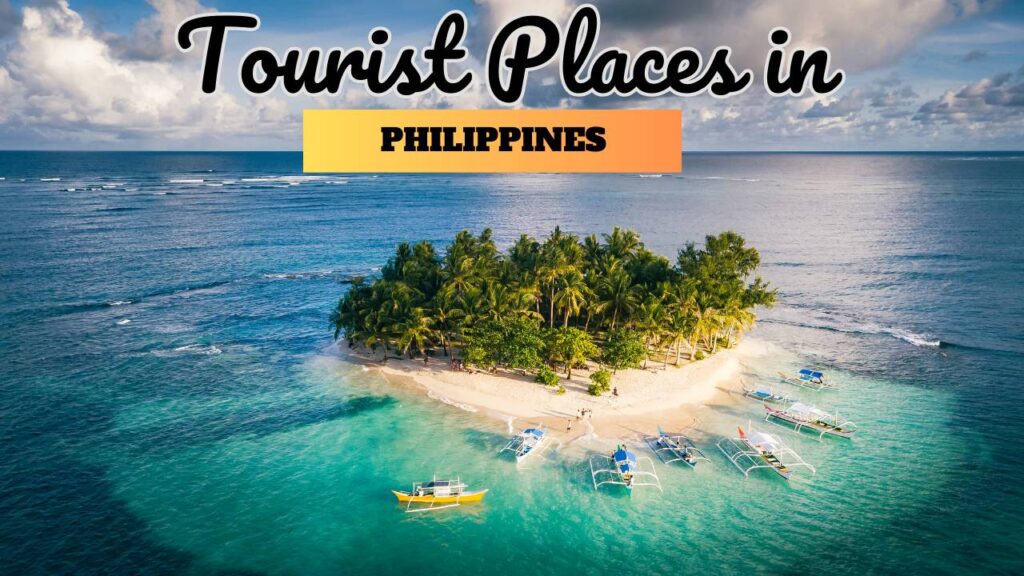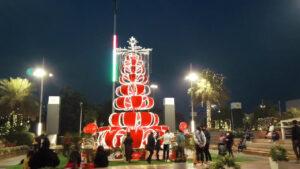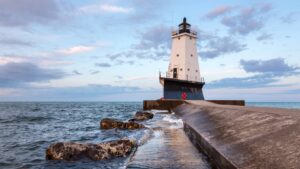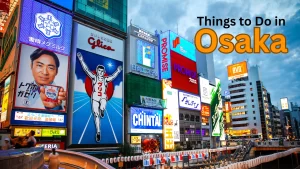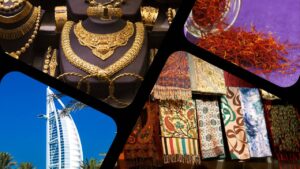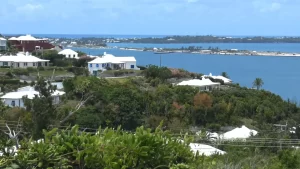What makes the Philippines so special, when to plan your trip, and which destinations you absolutely shouldn’t miss.
The Philippines is a treasure trove of natural wonders, cultural landmarks, and tropical adventures. As a Southeast Asian archipelago made up of more than 7,600 islands, this vibrant country offers breathtaking landscapes, rich history, and warm hospitality. A beach lover, an adventure seeker, or a history buff, visiting the top tourist places in Philippines can offer a once-in-a-lifetime experience.
About the Philippines
Philippines is located in the western Pacific Ocean and forms part of Southeast Asia. It’s composed of three major island groups—Luzon, Visayas, and Mindanao—each offering a unique flavor of culture, cuisine, and attractions. The capital city, Manila, located in Luzon, is a bustling metropolis that blends colonial history with modern city life. Meanwhile, cities like Cebu, Davao, and Iloilo reflect the country’s regional diversity.
What sets the Philippines apart is not only its geography but also its people. The locals, often referred to as “Filipinos,” are known for their warmth and hospitality. English is widely spoken, making travel easier for international tourists. The country also boasts a deep colonial history influenced by Spanish, American, and Japanese occupations, which can be seen in its architecture, traditions, and festivals.
Apart from its cultural heritage, the Philippines is world-renowned for its biodiversity. From pristine beaches and coral reefs to mountains, volcanoes, and rainforests, nature is in abundance. Into scuba diving in Palawan, trekking in Banaue, or surfing in Siargao, the Philippines has it all.
Best Time to Visit the Philippines
Timing is everything when planning a trip to the Philippines. Since the country lies in the tropical climate zone, it experiences two primary seasons: the dry season and the wet season.
Dry Season (November to May)
Travelers enjoy the Philippines most during the dry season, especially between December and March. During these months, the weather stays sunny and pleasant, creating ideal conditions for beach outings, island hopping, snorkeling, diving, and other outdoor adventures. Since this is the peak tourist season, make sure to book your flights and accommodations early to avoid last-minute hassles.
April and May bring the hottest temperatures, sometimes reaching up to 40°C (104°F) in inland areas. Despite the heat, these months celebrate vibrant local festivals like the Pahiyas Festival in Lucban and Flores de Mayo, giving you a unique chance to immerse yourself in Filipino culture and tradition.
Wet Season (June to October)
The wet season, which runs from June to October, brings frequent rain showers and occasional typhoons. While travel remains possible, some remote destinations may close temporarily due to flooding or rough seas. Always check the local weather and transportation updates if you plan to travel during this time.
Still, the wet season offers unique advantages—you’ll encounter fewer tourists, score lower prices on hotels and tours, and enjoy the lush, green landscapes that thrive under tropical rain, particularly in the mountain regions. If a traveler who enjoys a quieter, more local experience, the rainy season could be your perfect window.
Top Tourist Places in the Philippines – A Full Guide
The Philippines is a true tropical gem that offers more than just beautiful beaches. It’s a country rich in culture, history, biodiversity, and unique landscapes. With over 7,000 islands to visit, travelers are often overwhelmed by the options. Below is a full breakdown of the most stunning and sought-after tourist places in the Philippines that you should include in your travel plans.
1. Palawan – Untouched Jewel of Southeast Asia
Palawan captures the imagination with its wild, untouched beauty. As the country’s last ecological frontier, this island province offers incredible biodiversity and majestic seascapes. You can start your journey at the Puerto Princesa Underground River, where you’ll cruise through a surreal cave system beneath limestone mountains — a UNESCO World Heritage Site and one of the New 7 Wonders of Nature.
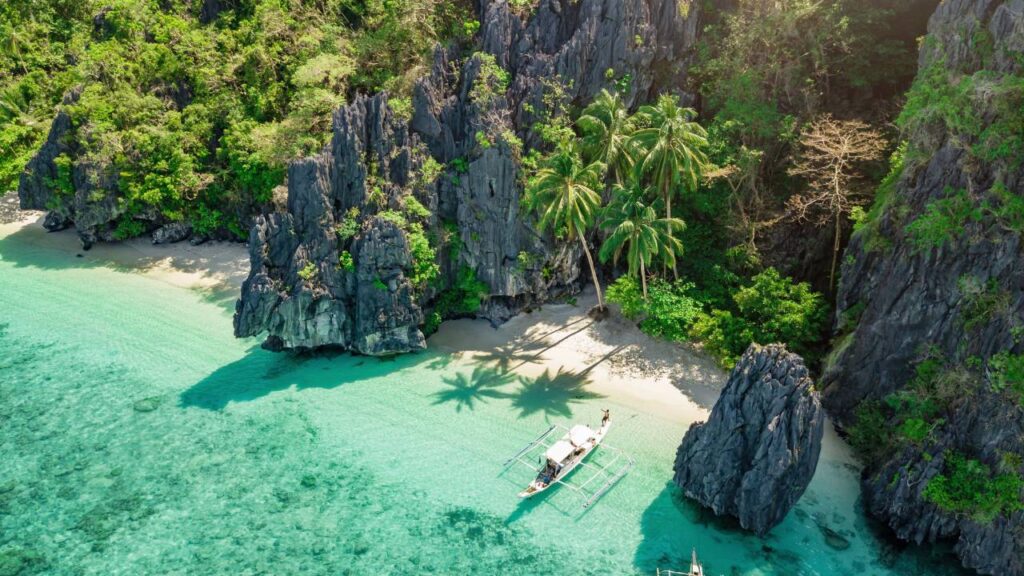
From there, head north to El Nido, where limestone cliffs rise dramatically above emerald waters. Go island-hopping across secret lagoons, swim in hidden beaches, and dive among coral reefs teeming with marine life. If you continue to Coron, you’ll know saltwater lakes located between cliffs and historic WWII shipwrecks that attract divers worldwide. For serious diving enthusiasts, the remote Tubbataha Reefs Natural Park offers some of the best coral walls and marine biodiversity on the planet.
2. Boracay – A Rejuvenated Island Paradise
Boracay, a small island in the Visayas region, has long been famous for its white sandy beaches and lively tourist scene. After a massive rehabilitation effort in 2018, the island now stands as a model of sustainable tourism. The centerpiece of Boracay is White Beach, a four-kilometer stretch of ultra-fine, powdery white sand paired with crystal-clear blue waters. The beach is divided into Stations 1, 2, and 3, each catering to different types of travelers—from luxury seekers to budget backpackers.
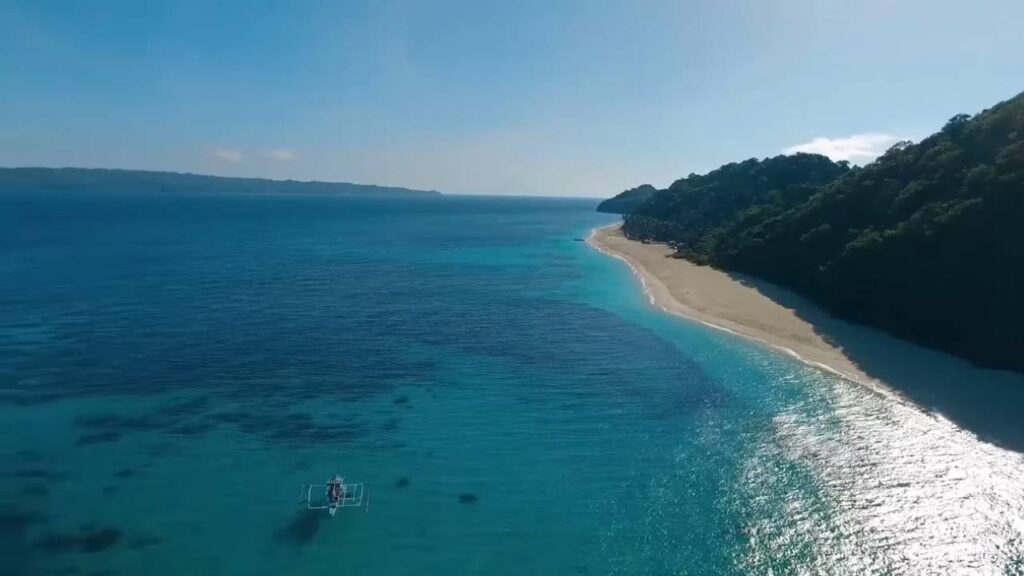
During the day, visitors can enjoy a wide range of water activities such as parasailing, paddleboarding, helmet diving, and glass-bottom boat tours. When the sun sets, the island transforms into a nightlife hotspot. Bars and restaurants come alive with music, fire-dancing performances, and beach parties that last into the early morning. The newly implemented rules have also ensured cleaner shores and better infrastructure, making Boracay an even more enjoyable and safe destination for all.
3. Cebu – Fusion of History, Culture, and Natural Beauty
Cebu is one of the most versatile destinations in the Philippines. It combines the vibrancy of a historic city with the tranquility of beautiful islands and lush countryside. In Cebu City, visitors can immerse themselves in Philippine history by visiting landmarks like Magellan’s Cross, which marks the arrival of Christianity in the country. The Basilica Minore del Santo Niño, which houses one of the oldest religious relics in the Philippines, is another major highlight.
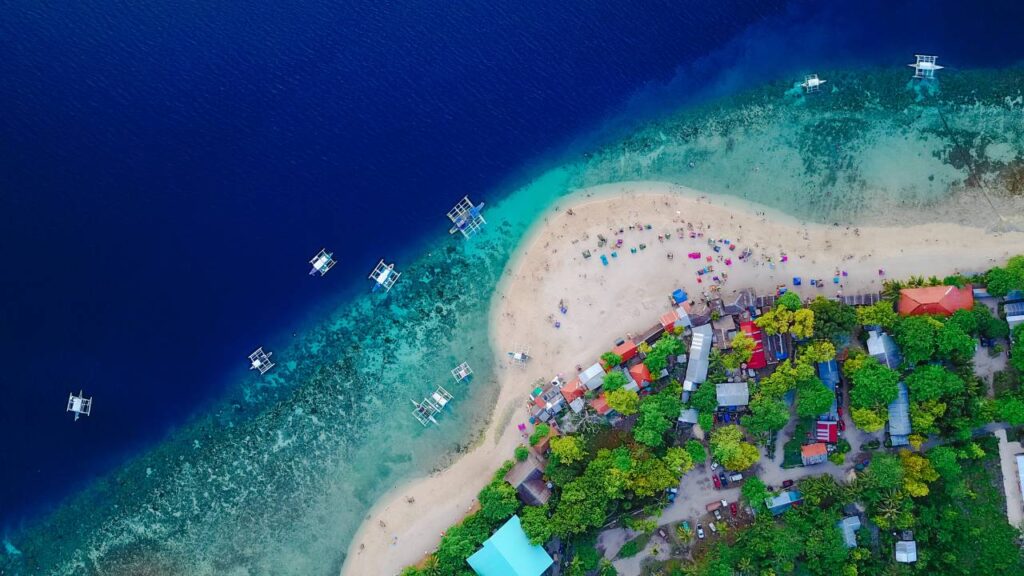
Outside the city, Cebu’s true beauty reveals itself. In Oslob, tourists can swim with the gentle giant whale sharks in their natural habitat. This awe-inspiring experience is both safe and closely regulated. Further inland, the province features attractions like Tumalog Falls, a towering curtain of cascading water set in a tropical forest. Kawasan Falls in Badian is another crowd-puller, especially popular among adrenaline junkies who enjoy canyoneering—a thrilling activity that involves trekking, jumping off cliffs, and swimming through natural water systems. Northern Cebu also offers access to Malapascua Island, a small, peaceful island renowned for thresher shark diving.
4. Bohol – Land of Natural and Cultural Wonders
Bohol is a unique destination that offers something truly different from the rest of the country. The Chocolate Hills, a collection of over 1,200 perfectly conical hills that turn brown in the dry season, provide a landscape that’s both surreal and iconic. Beyond its geological marvels, Bohol is also home to the Philippine Tarsier, one of the smallest primates in the world. These wide-eyed creatures are found in the Tarsier Conservation Sanctuary in Corella, which offers a respectful and eco-friendly way to see them up close.
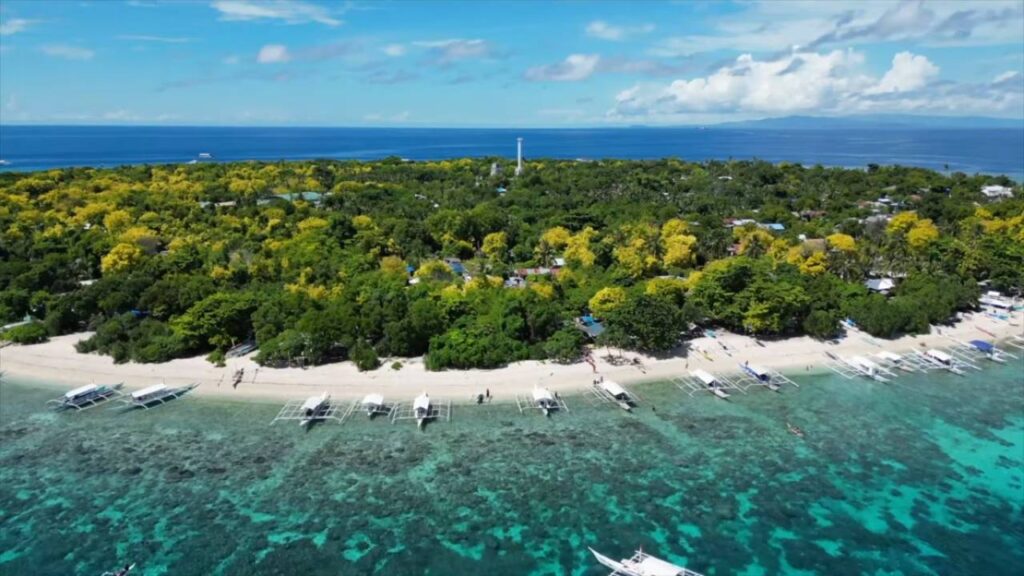
The island’s rich history is evident in its well-preserved Spanish-era churches, including the Baclayon Church, one of the oldest stone churches in the Philippines. Panglao Island, connected to Bohol by bridges, boasts pristine beaches, luxury resorts, and world-class diving spots like Balicasag and Pamilacan Islands. Another relaxing activity is a cruise down the Loboc River, where floating restaurants serve traditional Filipino food with live local music, all while surrounded by lush jungle scenery.
5. Banaue and Sagada – A Highland Escape with Deep Cultural Roots
In the mountainous region of northern Luzon, Banaue and Sagada offer a stark contrast to the country’s coastal destinations. Banaue is famous for its ancient Ifugao Rice Terraces, which were carved into the mountains over 2,000 years ago using minimal tools. These terraces are not only a breathtaking sight but also a symbol of sustainable agriculture and indigenous ingenuity. They are considered a UNESCO World Heritage Site and a testament to the rich culture of the Ifugao people.
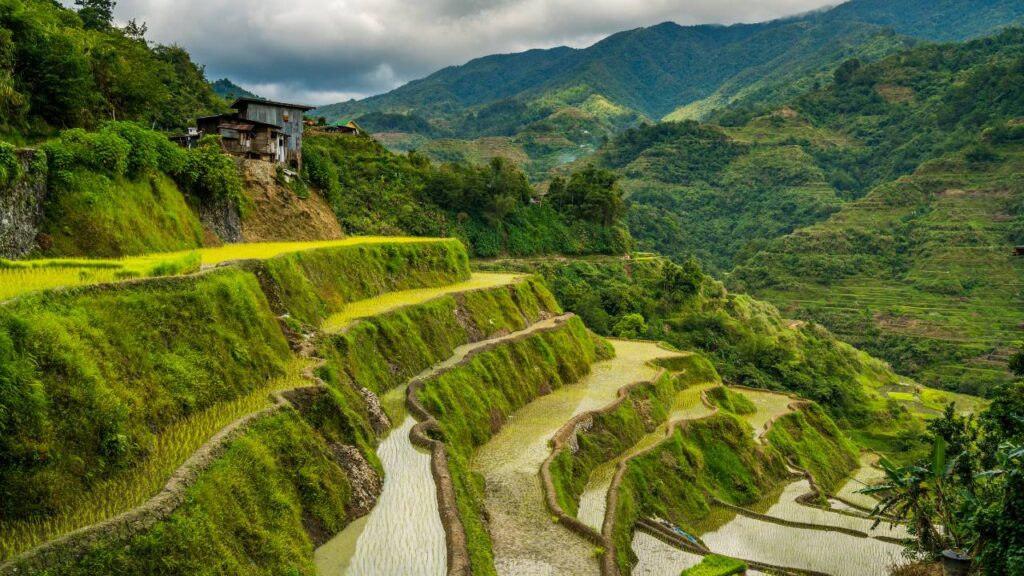
Further north lies Sagada, a small town that offers a tranquil atmosphere and a chance to delve into local traditions. The hanging coffins, an ancient burial practice, are perched on the side of cliffs and represent the unique spiritual beliefs of the native people. The Sumaguing and Lumiang Caves attract spelunkers and adventure seekers who enjoy exploring dark, narrow passageways and underground rock formations. For those who prefer nature hikes, a trek to Kiltepan Viewpoint offers a magical sunrise above a sea of clouds.
6. Siargao – Surfing Capital of the Philippines
Siargao, located off the coast of Mindanao, has quickly gained fame for being a laid-back island with strong surf culture. The island’s most iconic surf spot is Cloud 9, known for its powerful right-hand reef breaks that draw surfers from around the world. A long wooden pier leads to a viewing deck, allowing spectators to enjoy the action without getting wet.
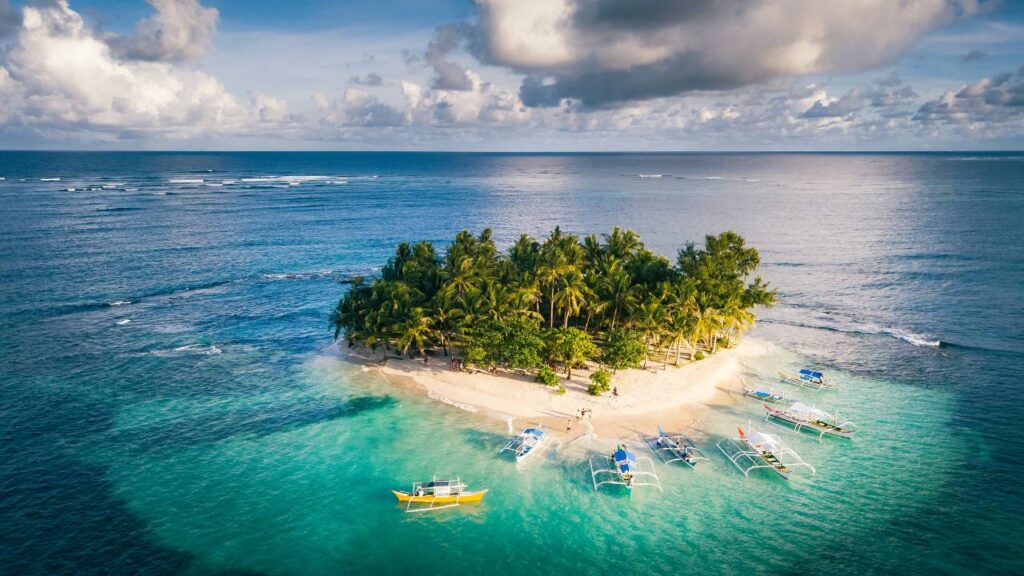
Beyond surfing, Siargao offers a wide range of natural attractions. Sugba Lagoon, surrounded by limestone cliffs and mangrove forests, is ideal for paddleboarding and swimming. Magpupungko Rock Pools, which appear only during low tide, offer a unique natural swimming experience in clear blue tidal pools. Island hopping is a must here, with popular stops like Naked Island, Daku Island, and Guyam Island, each offering their own slice of tropical bliss. With eco-conscious resorts, yoga centers, and rustic eateries, Siargao has become a haven for both adventurers and slow travelers.
7. Vigan – Spanish Colonial Treasure
Vigan, located in the province of Ilocos Sur, is one of the best-preserved examples of a Spanish colonial town in Asia. It is recognized as a UNESCO World Heritage Site for its well-preserved architecture and cultural significance. Walking down Calle Crisologo, the town’s main street, feels like stepping back in time. Horse-drawn carriages, antique houses, and cobblestone streets provide an immersive experience of the colonial past.
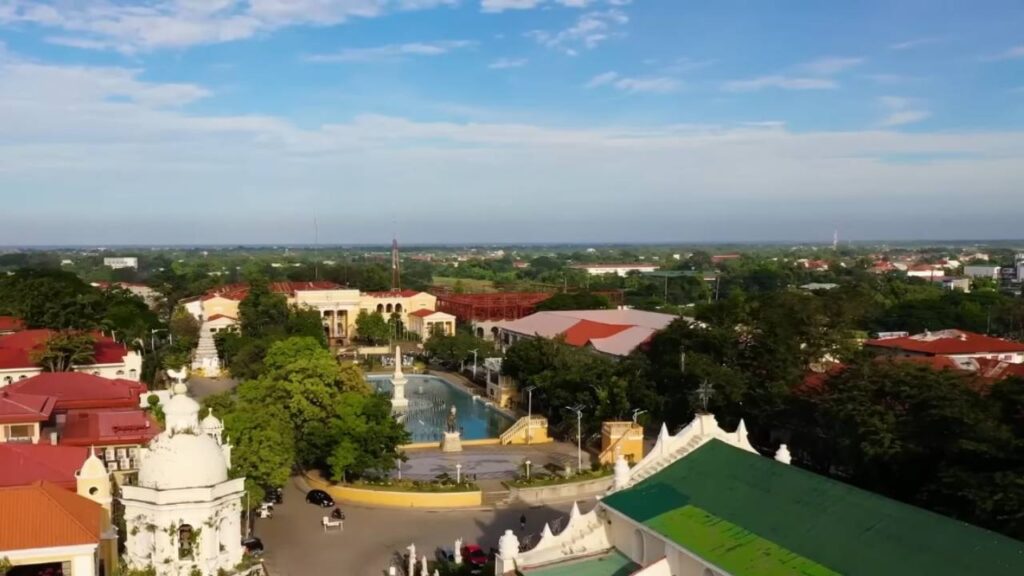
Visitors can enjoy the Syquia Mansion Museum, once the home of former Philippine President Elpidio Quirino, to gain insight into upper-class life during the Spanish era. The Bantay Bell Tower, perched on a hill, offers panoramic views of the town and countryside. Vigan is also famous for its local cuisine, with dishes like Vigan empanada, a savory stuffed pastry, and Vigan longganisa, a garlicky local sausage, available in traditional restaurants throughout town.
8. Davao – City of Cleanliness, Culture, and Conservation
Davao City, the largest city in Mindanao, is known for its cleanliness, safety, and commitment to environmental sustainability. One of its main attractions is Mount Apo, the highest peak in the Philippines. Climbing this dormant volcano is a challenging endeavor that rewards trekkers with panoramic views and the chance to observe unique flora and fauna.
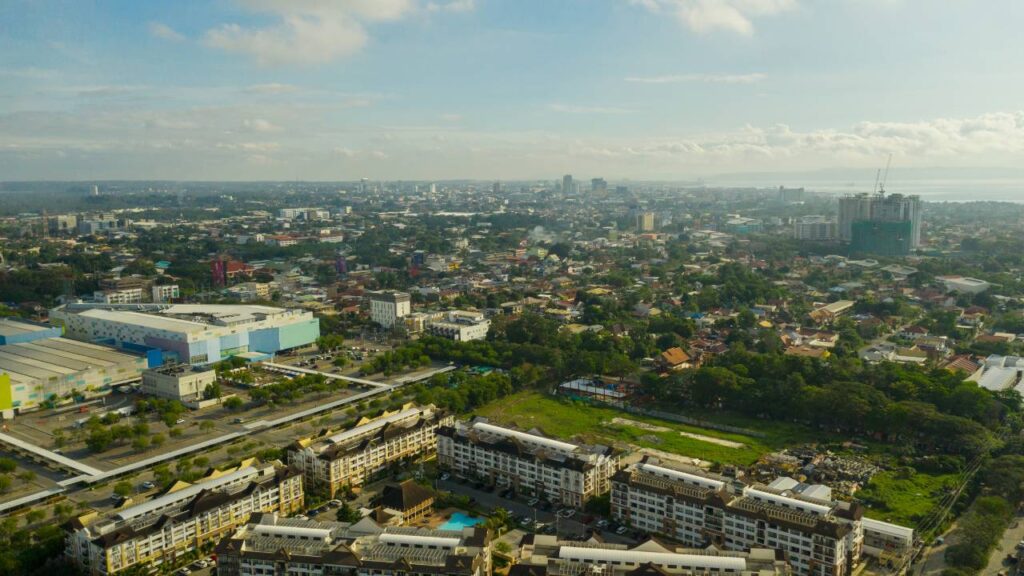
Another highlight of Davao is the Philippine Eagle Center, a conservation facility dedicated to protecting the critically endangered Philippine eagle, also known as the “monkey-eating eagle.” This center offers educational tours that allow visitors to learn about the bird and ongoing conservation efforts. Davao is also known for its orchid farms, fruit plantations, and its reputation as the durian capital of the Philippines, where adventurous eaters can try this famously pungent fruit. Just off the coast lies Samal Island, which offers white-sand beaches, dive spots, and luxurious resorts that are easily accessible via ferry.
By understanding the best time to visit and knowing where to go, you can make the most of your trip and truly experience the magic of the Philippines. So pack your bags, bring your curiosity, and get ready to this stunning archipelago—an adventure of a lifetime awaits!
FAQs
1. What are the best tourist places in Philippines for first-time visitors?
First-time visitors should visit popular destinations like Palawan (El Nido and Coron), Boracay, Cebu, and Bohol. These spots offer stunning beaches, natural attractions, and a great introduction to Filipino culture.
2. Is the Philippines a safe country for tourists?
Yes, the Philippines is generally safe for tourists, especially in major travel destinations. Like any country, it’s best to stay aware of your surroundings, avoid remote areas at night, and follow local advisories.
3. When is the best time to visit tourist places in Philippines?
The best time to visit is during the dry season from November to May, especially from December to March. The weather is sunny and ideal for beach activities and island hopping.
4. What is the most beautiful island in the Philippines?
Many consider Palawan the most beautiful island due to its crystal-clear lagoons, limestone cliffs, and biodiversity. El Nido and Coron in Palawan are globally recognized for their scenic views and diving spots.
5. What are the top adventure activities in the Philippines?
The Philippines offers plenty of adventure: scuba diving in Apo Reef, surfing in Siargao, canyoneering in Cebu, hiking Mount Apo, and spelunking in Sagada are just a few popular activities.
6. Which Philippine destinations are best for cultural tourism?
Vigan, Intramuros in Manila, Banaue, and Sagada are top spots for cultural tourism. They offer a glimpse into Spanish-era architecture, indigenous tribes, and historical landmarks.
7. What are the best places for snorkeling and diving in the Philippines?
Tubbataha Reefs, Coron’s shipwrecks, Apo Island, Anilao in Batangas, and Malapascua Island are top diving and snorkeling sites rich in marine biodiversity and coral reefs.
8. How many days do you need to enjoy top tourist places in Philippines?
A minimum of 10 to 14 days is recommended to multiple tourist places, including popular spots like Palawan, Cebu, and Bohol, while still having time to relax and enjoy the beaches.
9. Are there affordable tourist places in Philippines for budget travelers?
Yes! Places like Siargao, Bohol, and Iloilo offer budget-friendly accommodations, food, and tours without compromising the travel experience. Local transportation and street food are also very affordable.
10. Do I need a visa to visit the Philippines as a tourist?
Many nationalities, including visitors from the USA, UK, Canada, Australia, and EU countries, can enter the Philippines visa-free for up to 30 days. Make sure your passport is valid for at least six months from your arrival date.
